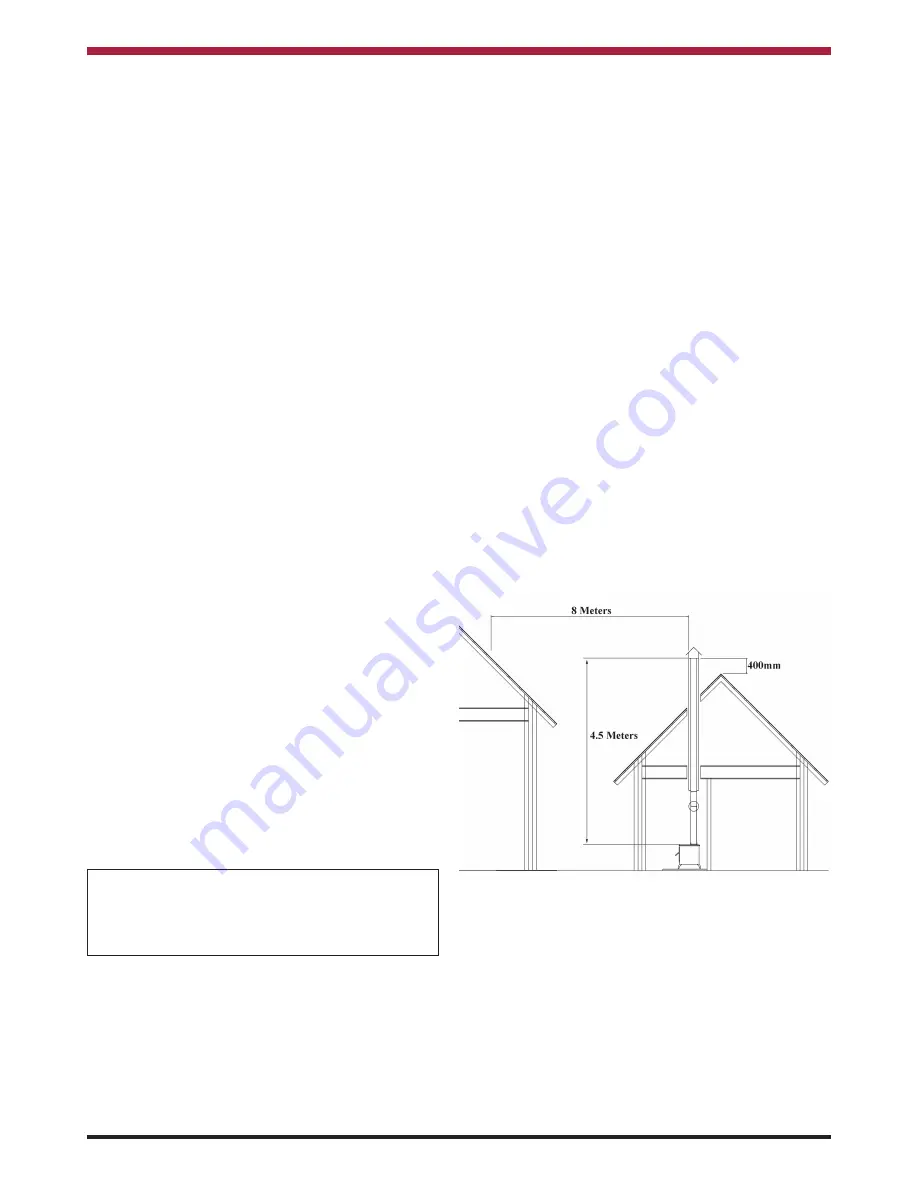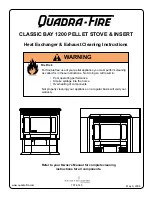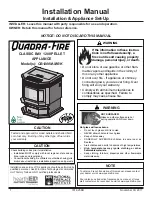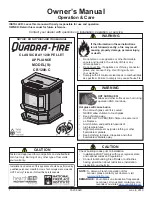
THE DUNMORE WOOD BURNER NON BOILER STOVE
INSTALLATION INSTRUCTIONS
GENERAL
When installing and maintaining your Stove respect
basic standards of fire safety. Read these instruc-
tions carefully before commencing the installation.
All relevant European and National Standards must
be complied with when installing this appliance.
Failure to do so may result in damage to persons
and property. Consult your local Municipal office
and your insurance representative to determine
what regulations are in force. Save these instruc-
tions for future reference.
Special care must be taken when installing the stove
such that Health & Safety requirements are met.
Handling
Adequate facilities must be available for loading,
unloading and site handling.
Fire Cement
Some types of fire cement are caustic and should
not be allowed to come into contact with the skin. In
case of contact with the skin wash immediately with
plenty of water.
Asbestos
This stove contains no asbestos. If there is a possi-
bility of disturbing any asbestos in the course of
installation then please seek specialist guidance and
use appropriate protective equipment.
Metal Parts
When installing or servicing this stove care should
be taken to avoid the possibility of personal injury.
“IMPORTANT WARNING”
This stove must not be installed into a chimney that
serves any other heating appliance.
2
The complete installation must be done in
accordance with current Standards and Local
Codes. It should be noted that the requirements
and these publications may be superseded during
the life of this manual.
FLUES
Flues should be vertical wherever possible and
where a bend is necessary, it should not make an
angle of more than 45
o
with the vertical. Horizontal
flue runs should be avoided except in the case of a
back outlet from the appliance, when the length of
the horizontal section should not exceed 150mm.
In order to minimise flue resistance and to make
sweeping easier it is recommended to use 2 x 45
o
bends rather than a 90
o
bend.
The flue termination point must be located to min-
imise any wind effects. Wind effects of suction,
pressure zones and turbulence can be created by
the roof and adjacent objects. Wind effects can also
be created by natural land contours.
To minimise the wind effects, the flue termination
point should be located a minimum of 400mm mea-
sured vertically from the roof or any other object that
may cause an obstruction and 8 meters measured
horizontally. Where this termination point does not
suffice it may be necessary to extend the flue pipe.
(See Fig.1)
Fig.1




































